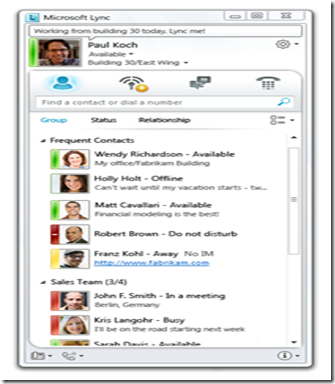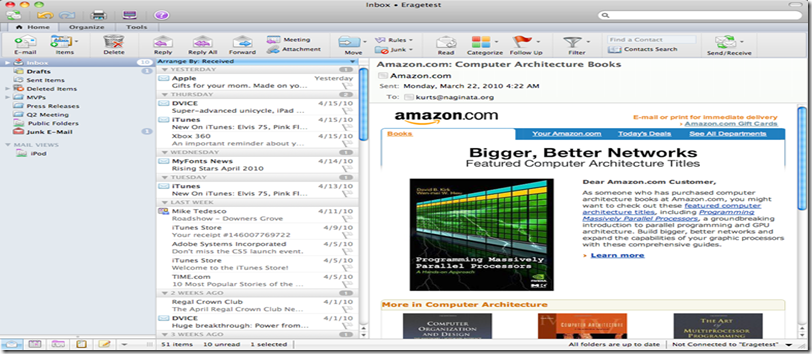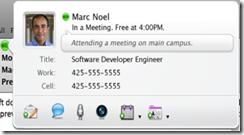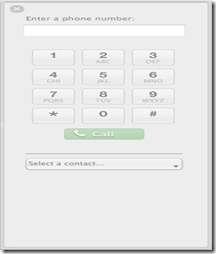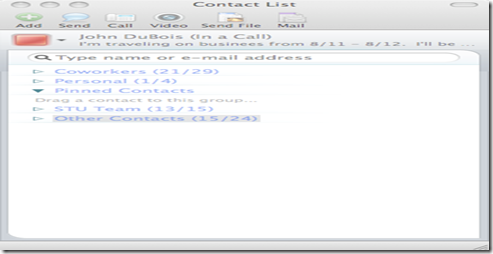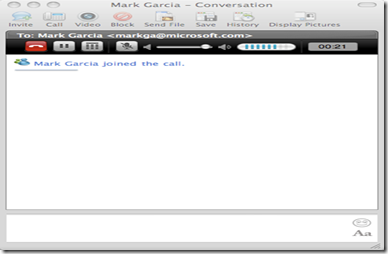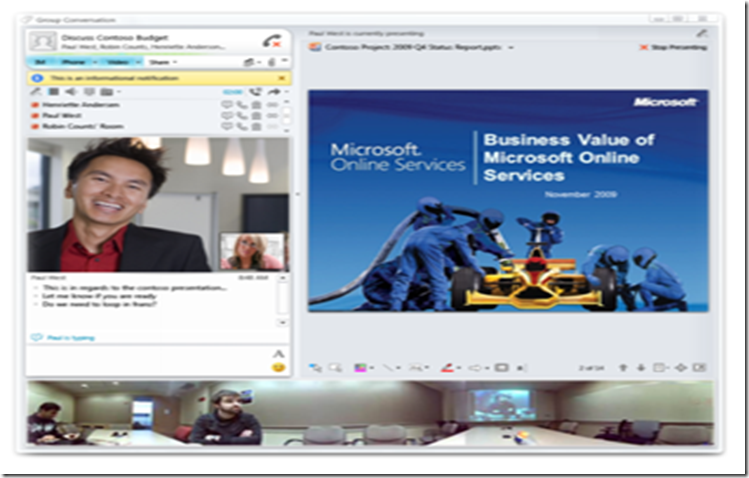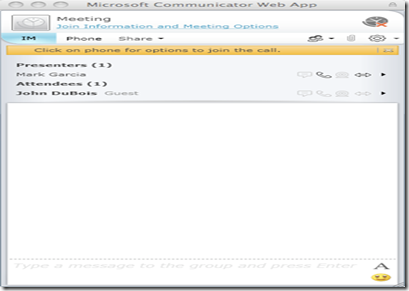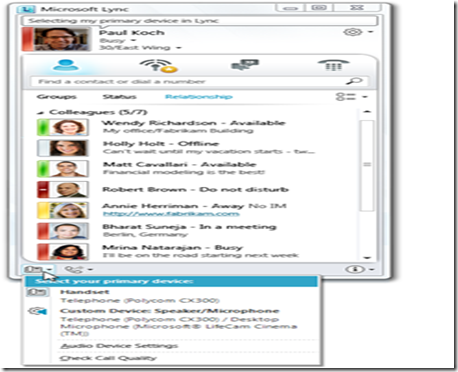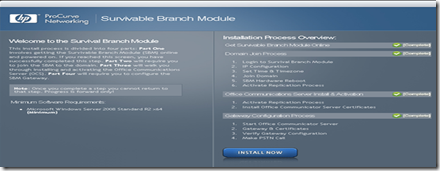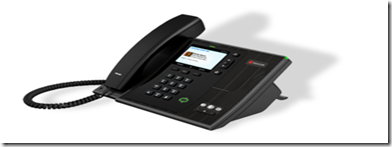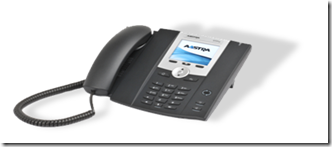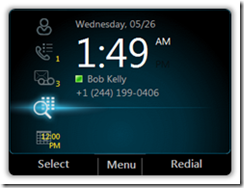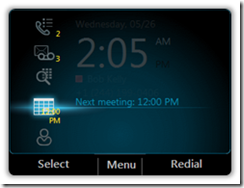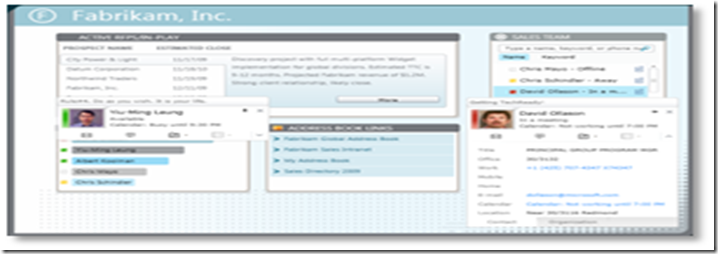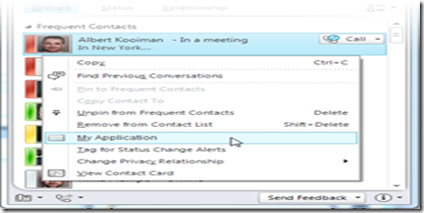What are the top Lync Server 2010 features I need to know about?
This release of Lync is not just a minor upgrade from OCS 2007 R2. It has some awesome new features and functionality coming. I figured I should try and provide a bulleted list of the top features you need to be aware of. (screenshots are courtesy of Lync product team and some of my own)
Lync 2010 Client
•Contact Cards – these are available in all Office and SharePoint applications as well
•Unified Contact Store – no longer do you have contacts all over place
•Activity Feeds – similar to Facebook status feeds shows list of status changes, title changes, OOF, etc.
•Fast Search – quickly find people in your organization
•Skill Search – you can find ‘Nanotechnology expert’ on your campus for example
•Frequent Contacts – folks you communicate with the most are listed
•Conversation View – lists all the communications you have had in a single view (meetings, voice calls, IMs, etc)
New Mac 2011 client
Mac Office 2011 just Released To Manufacturing (RTM) last Friday. Watch their funny RTM video here. With that release comes a new Outlook 2011 Mac client and a new Communicator client for Mac.
New Outlook 2011 for Mac client
Showing the ability to read Exchange calendar, change presence and display calendar information in the contact card on the Mac.
Some of the Mac 2011 enhancements include:
- Contact cards and photos
- Voice capabilities – make and receive calls internal and external – works with OCS 2007 R2 enterprise voice as well!
- Outlook/Exchange calendar integration – view availability of contacts
- Presence throughout the Mac Office 2011 products – including co-authoring on documents with presence awareness
Dialpad view
Voice call view on Mac 2011 client
Conferencing
•Single client – Live Meeting client is GONE!! All conferencing is provided natively in the Lync 2010 client.
•Join reliability – make it easier to join meetings from mobile phones and from meeting reminders
•PSTN conferencing features – will have DTMF controls, audio announcements, meeting lobby
•Rich conferencing experience – record meetings directly into WMV format, work on content in background during presentations
•Panoramic HD video – support for HD conferencing now, panoramic HD support as well
•Desktop & Application sharing – lightweight desktop sharing for faster rendering times – no more 2 second delays, etc.
•Reach client called Lync 2010 Attendee client – this is a Silverlight client for PCs (people joining from off campus), Macs and other platforms to consume meetings
•Infrastructure consolidation
•Video interop with Polycom, Radvision and Tandberg
Mac conferencing
Customers have been asking for this and there are plans to have Mac conferencing capabilities using a Silverlight Lync 2010 Attendee client client (web) for Mac users to start. Mac users can consume Lync meetings now. Additional conferencing functionality for Mac may be in the works post RTM. I will post more as more info comes available.
Some Mac Silverlight client conferencing features include:
View PC PowerPoints
View shared PC desktop
Remotely control PC desktop
Annotate PowerPoints, virtual laser pointer
Create and Post Polls, Vote in Polls
Create Whiteboard, collaborate in whiteboard
Can be combined with Mac 2011 Communicator client to include:
Audio conferencing
Video conferencing
Voice client improvements
•Dialpad
•Voicemail access – visual voicemail is very nice since you can play voicemails right in the client
•Private line – can setup one private line per voice enabled person
•Call delegation – can setup boss/admin and use Attendant Console for Admins/Receptionists
•Call routing – setup calls to go to another line forwarding or simulring (cell, home phone, etc)
•Call quality notification – lets you know if you are on a bad connection, echoing, speaking too loudly/softly, etc.
•Call park
•Device transfer – you can switch between multiple device real time during the call – headset, ip phone, usb phone, etc.
Voice server improvements
•Survivable branch appliance – appliance used for remote locations in case of a datacenter link outage/loss the SBA will leverage a PSTN connection for backup dialtone and failback to WAN link when available again. SBAs available from NET, Ferrari, HP, Audiocodes and Dialogic.
SBA diagram showing PSTN and WAN options
HP’s SBA appliance GUI screen
•Data center resiliency – can failover dialtone to alternate datacenters if primary datacenter goes down
•Call admission control (CAC) – can define bandwidth policies, audio and video routes, route traffic to Internet or PSTN based on links, etc.
•Announcement service – announce folks joining/leaving meetings
•Media bypass – no longer need mediation servers in remote locations for media nor are they needed for IP-PBX interop (for R2 voice customers today this translates to a huge reduction in Lync servers needed)
•E-911 for North America – native E911 location awareness See my post here for more info.
•Response group improvements
•Analog device support – fax machines and analog phones can be reflected in call detail records, etc.
Deployment improvements
•Standard and Enterprise Editions
•Reduced # of server roles – elimination for need of dedicated mediation server and other roles
•Server colocation enhancements
•Central Management Store – Lync config data stored in SQL now
•Planning Tool
•Topology Builder
•Migration tools
Mobility
I will update more on the blog as things progress for Lync Mobile as far as available mobile platforms, final features, etc:
Features potentially slated (subject to change of course):
Single number reach - both ways (from Lync to mobile and from Mobile to Lync) where your mobile number stays hidden
Mobile voicemail avoidance – simul ring will send call to Exchange voicemail vs. mobile voicemail for example
Photos for each of your contacts
Join meeting – can join Lync conferences right from phone
See attendees in a Lync conference – along with who is talking
Control a Lync conference from mobile – mute, promote, remove, etc
Plenty of other mobile client features upcoming
Manageability
•Lync Server Control Panel – core Lync administration capabilities from web page
•PowerShell – Lync Server can be fully managed from the command line if GUI is not your cup of tea
•Role Based Access Control – granular administration delegation down the property level if needed
•Server Draining – can drain calls before shutting down server for maintenance for example
•Virtualization Support – huge win here since now all the audio/video roles can be virtualized
•Enhanced monitoring – much better reporting and monitoring details, SCOM packs, etc.
Lync Hardware Devices
Many more choices and variety of USB and IP phone pricepoints available now for Lync.
Some of the IP Lync phone device enhancements:
•Multi language support
•Contact Card – photos on the IP phone
•Search
•Call Transfer
•Calendar Integration – appointment will pop up and you can join the meeting right from the IP phone!
•Meeting Join
•Device management
New Lync phone views
Lync phone Calendar view
Lync Development Platform
One of the big distinguishing points of the Lync platform is the ease of extensibility of our UC platform.
What comes with the UCMA 3.0 SDK (text excerpt from Chris Mayo’s UCMA FAQ):
- OC "14" Controls for Silverlight and WPF - Drag and drop controls that provide presence, contact card, contact list, custom contact list and click to call (including IM and voice). This gives you the ability to provide the same OC integration you see in Office 2010 and SharePoint 2010. These controls are part of the SDK and will be fully supported.
- OC "14" Object Model API - New in this SDK is a managed API that provides access to the full object model behind OC "14". This API gives you access to presence information, contacts, communications (IM, voice, video, desktop sharing, file sharing, etc.) in a very discoverable and easy to use API. New in this version of the API is a "UI-Suppresson Mode" where you can integrate OC "14" features into your application withou showing OC "14". This is a great way to create custom OCS "14" clients with a customer user experience.
- Contextual Conversations - New in this version is full support for adding application data as context to communications. For example, you can use the API to launch a voice call and include data from your application (such as a customer ID from your database). When the call is received, OC "14" can pass that information to your application so you can present the call in an appliation specific way (such as opening the customer record in your application).
- Convesation Window Extensions - New in this version is the ability to embed a Silverlight application as part of the conversation window. Conversation Window Extensions can be launched using conversation context (see above).
- Conversation Docking - New in this version is the ability to launch or accept an OC "14" conversation and have the conversation window embedded in your application. This allows users to continue the conversation while working in your applications without having to Alt-Tab between your application and the conversation.
Embed click to call/chat inside of LOB applications or Web sites using WPF or Silverlight
Extend apps inside of Lync client with context.
Grab the UCMA 3.0 RC SDK here.
Watch some of the new development Lync capabilities here.
Hopefully this gives you an idea of some of the amazing features coming with the Microsoft Lync Platform. Technet now has Lync 2010 content posted here for more technical deep dives. Stay tuned as we will have more posts around these topics upcoming.
